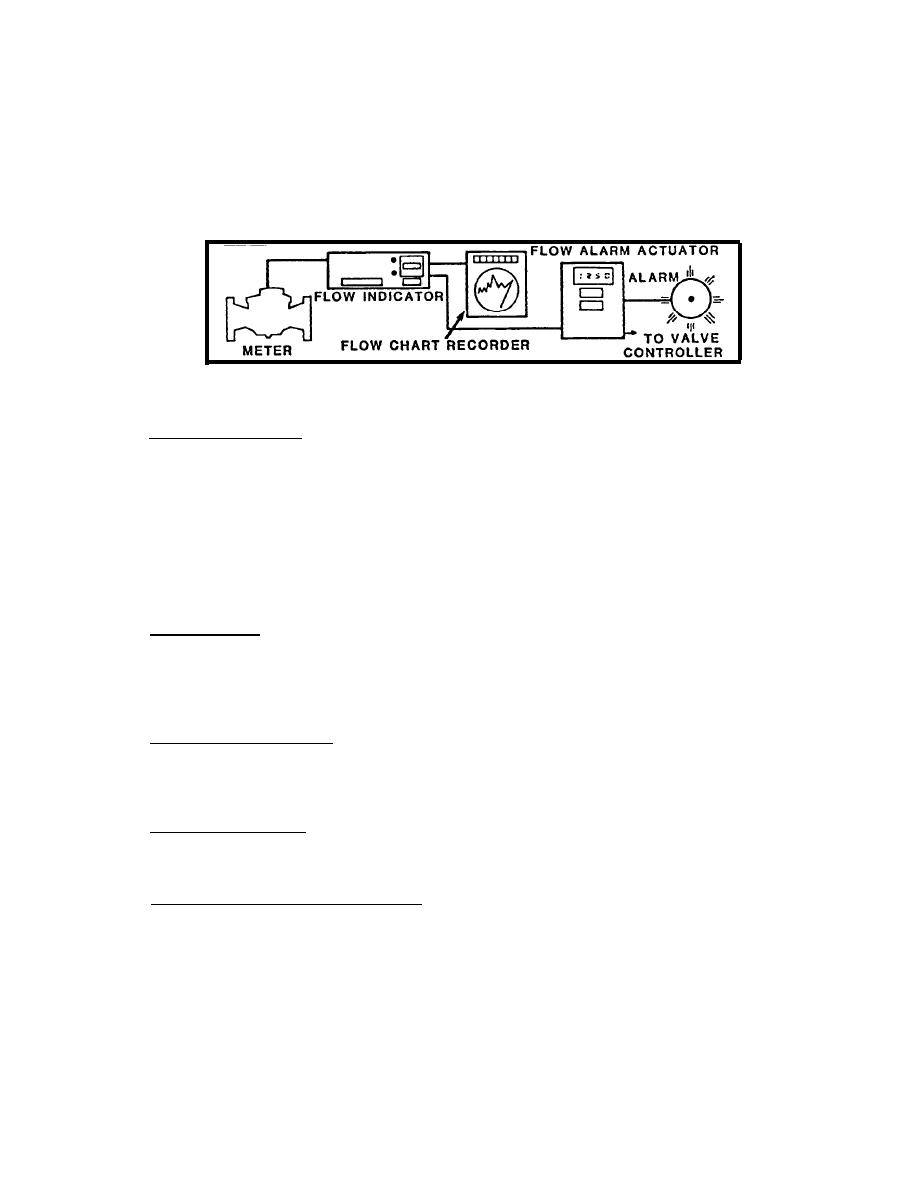

Custom Search
|
|

|
||
 FIGURE 10-10.
Alarm Actuator System
2.2 Signal Generators. Electronic or electromechanical signal generators are
available that produce analog and/or digital signals for transmitting data to
data processing equipment (onsite meters or recorders) or to a more complex
remote system.
2.2.1 Analog Output. The analog output of a signal generator is a continuous
signal representing the quantitative information obtained by the meter.
2.2.2 Pulse Output. A pulse output is a discrete series of pulses produced
by the signal generator representing quantitative information.
2.3 Power Supply. Power supplies are a required part of many systems to
supply low voltage in direct current (VDC) and low current in milliamperes
(mA) for excitation of the signal generator. The low voltage and current is
processed by the signal generator, producing an analog and/or digital signal,
for transmission to the monitoring system.
2.4 Pulse Rate Converter. The pulse rate converter (PRC) is designed to
interface between the meter pulse generating unit and measuring equipment.
The device accepts low-level input frequency signals, processes the signals,
and provides output signals that are proportional to the use rate.
2.5 Pulse Compensator. Pulse compensators are self-contained electronic
modules which compensate the output pulse train of a meter with respect to a
secondary process variable such as temperature, pressure, or density.
2.6 Frequency-to-Current Converter. The frequency-to-current converter (FCC)
converts the pulse output from a meter or other transmitter into a
proportional 4-20 mA current loop signal.
10-7
|
 
|
|
 |
||